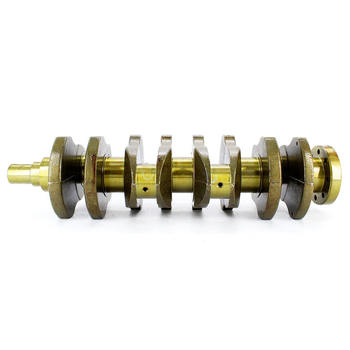
A functioning crankshaft is absolutely essential for your car's engine to operate. It's the backbone of the engine, converting the up-and-down motion of the pistons into rotational force that ultimately powers the wheels. So, can you drive with a bad crankshaft? The short answer is a resounding no. Attempting to do so can lead to catastrophic engine failure and potentially dangerous driving conditions.
Signs of a Bad Crankshaft
Recognizing the symptoms of a bad crankshaft is crucial for preventing further damage. These signs can range from subtle noises to severe performance issues. Common indicators include a loud knocking sound coming from the engine, low oil pressure, vibrations, and difficulty starting the car. You might also notice a significant decrease in engine performance and fuel efficiency. Have you noticed any of these symptoms in your vehicle?
The Dangers of Driving with a Bad Crankshaft
Driving with a bad crankshaft is incredibly risky. The damage can quickly escalate from a minor inconvenience to a complete engine failure, leaving you stranded on the road. In some cases, a failing crankshaft can even seize the engine entirely, causing a sudden loss of power while driving, which can be extremely dangerous. This could lead to an accident, endangering yourself and others.
What Happens When a Crankshaft Fails?
When a crankshaft fails, it can cause a chain reaction of damage within the engine. Connecting rods can break, pistons can crack, and the engine block itself can suffer irreparable damage. This type of extensive damage often requires a complete engine replacement, a costly repair that can easily run into thousands of dollars.
What Causes Crankshaft Failure?
Several factors can contribute to crankshaft problems. Lack of proper lubrication, due to low oil levels or contaminated oil, is a major culprit. Excessive engine wear and tear, particularly in high-mileage vehicles, can also weaken the crankshaft over time. Driving with a bad crankshaft accelerates this wear and tear, making the problem significantly worse. Additionally, manufacturing defects, although rare, can sometimes lead to premature crankshaft failure.
Diagnosing a Bad Crankshaft
Diagnosing a bad crankshaft typically involves a thorough inspection by a qualified mechanic. They might use specialized tools to measure oil pressure, check for engine knocking sounds, and inspect the crankshaft for visible damage. Sometimes, they might need to remove the engine's oil pan for a closer inspection of the crankshaft and connecting rods.
Crankshaft Repair vs. Replacement
In some cases, minor crankshaft damage, such as a slightly bent journal, might be repairable by grinding or machining. However, more severe damage often necessitates a complete crankshaft replacement. Considering the complexity and labor involved in crankshaft replacement, it's best to consult with a trusted mechanic to determine the most appropriate and cost-effective solution. Thinking about repairing the crankshaft yourself? It's generally not recommended due to the specialized tools and expertise required.
The Cost of Crankshaft Repair or Replacement
The cost of crankshaft repair or replacement can vary significantly depending on the extent of the damage, the make and model of your vehicle, and labor rates in your area. Minor repairs might cost a few hundred dollars, while a full crankshaft replacement, including labor, can range from several thousand dollars to upwards of five thousand dollars.
Preventing Crankshaft Problems
Regular maintenance is key to preventing crankshaft problems. This includes regular oil changes with the correct oil type and viscosity, as recommended by your vehicle's manufacturer. Keeping your engine properly tuned and addressing any engine issues promptly can also help prevent excessive wear and tear on the crankshaft and other critical engine components. Remember, preventing a problem is always cheaper than fixing it!
What to Do if You Suspect a Bad Crankshaft
If you suspect you have a bad crankshaft, don't drive the car. Continuing to drive with a damaged crankshaft will only exacerbate the problem and potentially lead to catastrophic engine failure. Instead, have your vehicle towed to a qualified mechanic for a thorough inspection and diagnosis. They can determine the extent of the damage and recommend the best course of action. Don't risk your safety and your wallet by driving with a bad crankshaft – get it checked out immediately.

 The Unseen Powerhouse: Unveili
The Unseen Powerhouse: Unveili
 Unveiling the Precision: The A
Unveiling the Precision: The A
 Navigating the World of Cranks
Navigating the World of Cranks
 The Unsung Heroes: What Makes
The Unsung Heroes: What Makes
